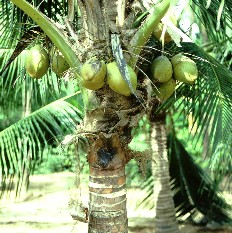From: Earth's Newsdesk and the Rainforest Portal - 22/02/2009
The nation's future carbon payments for avoided deforestation in doubt. As a global leader in promoting such payments, the PNG government would be well advised to focus upon better protecting its rainforests, if it wants to fully access carbon monies based upon their continued carbon storage
An important new study in the journal "Biotropica" finds that between 1972 and 2002, a net 15 percent of Papua New Guinea’s (PNG) rainforests [search] were cleared and 8.8 percent were degraded through logging[1]. The clearance rate of 1.1 to 3.4 percent/yr in commercially accessible forests is much higher than reported previously by the FAO.
PNG -- located in the South Pacific, northeast of Australia -- holds some of the world's largest and most important intact and contiguous forests. Their fate has important implications for local livelihoods and biodiversity, and both local and global climate change. The new study quantifies forest loss in PNG for the first time with a high degree of accuracy. And the findings are not good.
Some 36% of the accessible forest estate has been degraded or deforested. This finding raises the question of whether the PNG government -- as a welcome leader in promoting avoided deforestation payments -- is pursuing the necessary policies to ensure large rainforests continue to exist as the basis for their country to receive large and continuous international payments for their forest's carbon storage?
"You cannot industrially log, and clear forests for biofuels, and expect to receive avoided deforestation payments," says Dr. Glen Barry. "As a nation PNG is going to have to choose between continued once off rainforest destruction, mostly for foreign advantage, or being paid more, essentially forever, for maintaining the national and global benefits of fully intact rainforests."
Ecological Internet calls upon PNG to immediately reappraise its logging, biofuel and agriculture policies; to ensure maximum amounts of fully intact forests are available for anticipated international carbon market funding to stop deforestation and diminishment, and for continued non-diminishing traditional local uses. First time industrial logging of primary forests releases huge amounts of stored carbon and permanently reduces the forest's carbon holding potential. Clearly industrial forestry, certified or not, is a dying industry with no future.
The study found that change in PNG rainforest extent and condition has occurred to a greater extent than previously recorded. The study assessed deforestation and forest degradation in Papua New Guinea by comparing a land-cover map from 1972 with a land-cover map created from nationwide high-resolution satellite imagery recorded since 2002. In 2002 there were 28,251,967 ha of tropical rain forest.
Between 1972 and 2002, a net 15 percent of Papua New Guinea’s tropical forests were cleared and 8.8 percent were degraded through logging. The drivers of forest change have been concentrated within the accessible forest estate where a net 36 percent were degraded or deforested through both forestry and nonforestry processes. Since 1972, 13 percent of upper montane forests have also been lost.
It was estimated that over the period 1990–2002, overall rates of change generally increased and varied between 0.8 and 1.8 percent/yr, while rates in commercially accessible forest have been far higher—having varied between 1.1 and 3.4 percent/yr. The study concluded that rapid and substantial forest change has occurred in Papua New Guinea, with the major drivers being logging in the lowland forests and subsistence agriculture throughout the country with comparatively minor contributions from forest fires, plantation establishment, and mining.
"Sari tumas. Nogat bikpela bus, bai yu no kan kisim win mani long lukautim em." In Melanesian pidgin: I am very sorry, if you don't have large rainforests, you cannot be paid to take care of them.
----------------------------------------
Check for earlier Pacific Biofuel posts: http://pacbiofuel.blogspot.com/

No comments:
Post a Comment